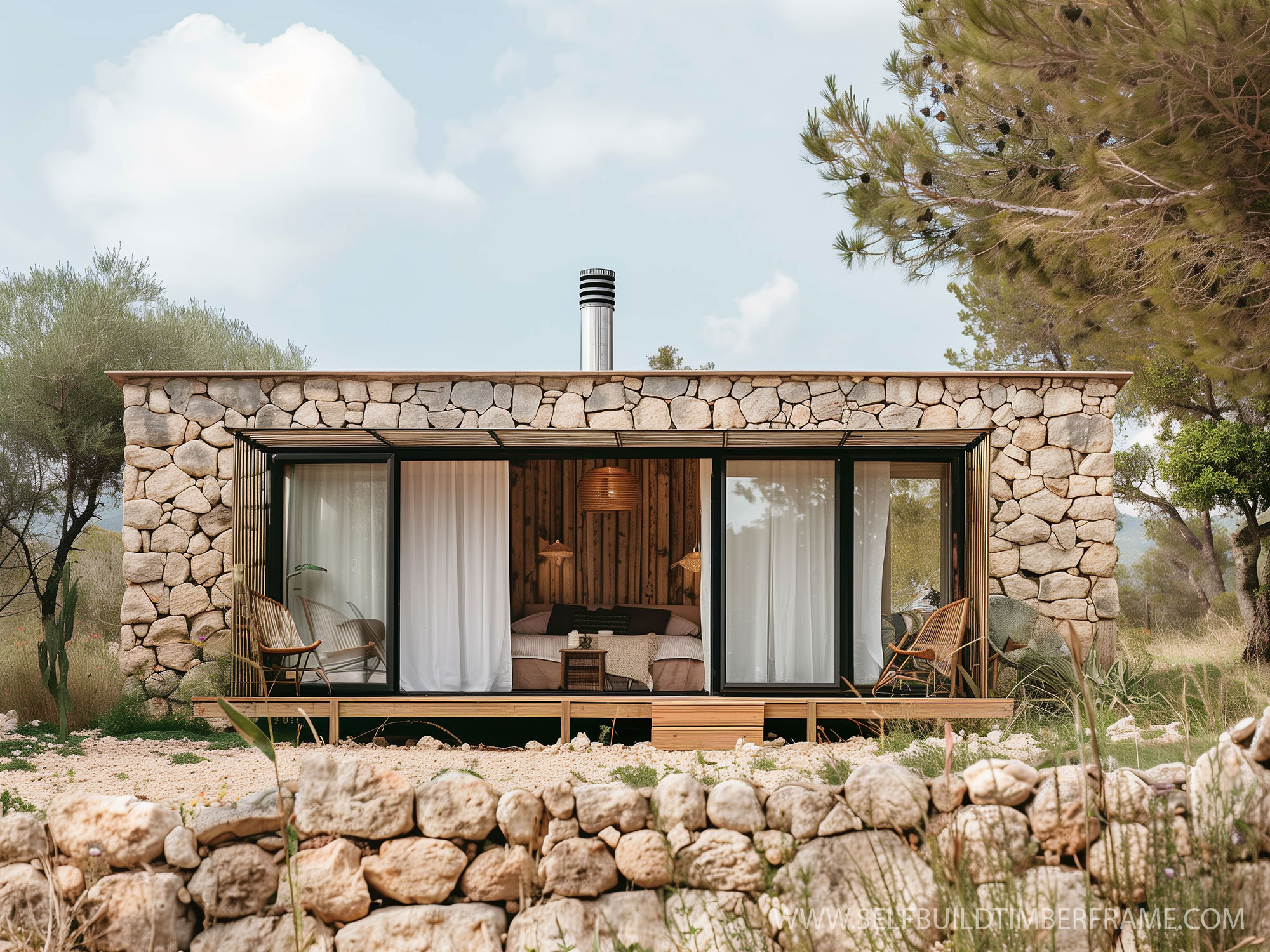Did you know a mobile home could be used as a residential annex in the garden of a house without the need for planning permission? General Conditions…
Land situated outside of a conservation area, national park or article land where development is restricted.
Use must accompany the house, used by a family member for example and not rented as a private residence.
Located in the residential boundary of a dwelling house. Not adjoining woodland or agricultural land.
Can be assembled on location, under guidelines, if access is restricted.
Many homeowners with large gardens would like to build residential annexes to their property in order to both increase the value of the site and expand the living spaces.
In many cases household extensions and garden room summer houses are allowed without planning permission but homeowners cannot build a large residential garden lodge / bungalow, with full cooking, washing, sleeping facilities without the need for planning… so what’s the big secret? How can you build a large bungalow in the garden without planning? … the answer is a type of ‘caravan’ called a ‘mobile home”!
The laws that allow a touring caravan to be parked in a drive also allow a large mobile home to be sited in a garden and used in association to the main house.
The objective of this book is to inform the reader of one thing: the permitted development right to site a caravan or mobile home in the garden of a house without the need for planning permission.
Historically mobile homes have little architectural beauty and bear connotations of lower class living standards. However, modern designs and build methods can offer all the luxury of a conventional build.
You may have seen mobile homes and static caravans being transported along the motorway and think of the practical impossibility of delivering the structure into your back garden or down a local road… no problem… caravans, even large mobile homes, can be assembled on site if access is restricted.
Building a residential ‘granny annex’ as a mobile home is fantastic way to avoid the need for planning approval altogether and substantially increase the value and use of your property.
CONTENTS:
Section 1 – Introduction
• General Conditions
• Permitted Development Rights
• Bad Access?
• Certificate of Lawfulness
• Mobile Homes have moved on!!!
• What are ‘caravans’?
• Different types of Caravan
• Big!
• Conforming to the Definition
• Good idea!
• Law Source for Caravans in Gardens
• What does incidental mean?
• Incidental use or separate dwelling?
• Demonstrating Incidental Use
• Definition of a ‘Dwelling house’
• Definition of a ‘Curtilage’
• Farm / Agricultural Land
• Agricultural Workers Dwellings
• Notes: The Legal Definition of a ‘Caravan’
• Notes: The Caravan Sites and Control of Development Act 1960.
• Notes: Case Law
Section 2 – Original Documents of Law
Section 3 – Contacting the Council
• Example Letter 1 & 2
• Lawful Development Certificate
• Benefits of a Lawful Certificate
• Time Limits for Enforcement Action
• Application for LDC Notes
• Application for Proposed Use or Development
• Example Application
• Example Council Approval
Section 4 – Floor Plans
• Floorplans
• Example Designs
• Design Templates
Buy the book here:
Planning Permission for Caravans and Mobile Homes
Information about planning permission for caravans and mobile homes.
The storage of a touring caravan within a residential curtilage (the enclosed area immediately surrounding a house or dwelling) does not need planning permission, though it may be prohibited in a covenant on the deeds of the dwelling.
Holiday caravan sites do not need planning permission if they are sites occupied and supervised by exempted organisations.
The storage of a static caravan within a residential curtilage may need planning permission. The ultimate decision will depend on where it is located in relation to the house and the use to which it is put.
To consider proposals for small-scale touring caravan and camping sites in terms of their locational merits with regard to landscape quality, siting and availability of screening.
The provision of sites for caravans and camping is an important element in the accommodation of holiday-makers. The main planning issue raised by the use of land for stationing caravans is that of countryside protection. Caravan sites can be very obtrusive features in the landscape detracting from its scenic quality and amenity.
Parts of the coast have been adversely affected by the development of static caravan sites, which are seen by many as ugly, obtrusive and regimented. The case for any new static caravan development, or the expansion of existing facilities, will be assessed against the need to protect the coastal zone and countryside. The creation and extension of static caravan parks on open or exposed sites, especially adjacent to the coastline, will be discouraged. This will be particularly important in environmentally vulnerable areas.
Appropriately sited small-scale extensions to existing static caravan sites may be permitted where, by rounding-off and improvement to landscaping and layout, the result would be a less intrusive site.
Small-scale touring caravan parks and camping sites are distinct from static caravan sites by being seasonal in character, leaving relatively little evidence of their usage in the winter months. Permission may be granted for touring sites at appropriate locations, where they are effectively screened and not visually intrusive. Access to sites should be carefully planned and should be designed to allow safe movement for cars and caravans to and from the site.
The demand for sites has concentrated traditionally on the most popular holiday areas, particularly on the coast, although there is some demand inland. The policy for new touring caravan parks in coastal Countryside Policy Areas is set out in Policy CO 6.

